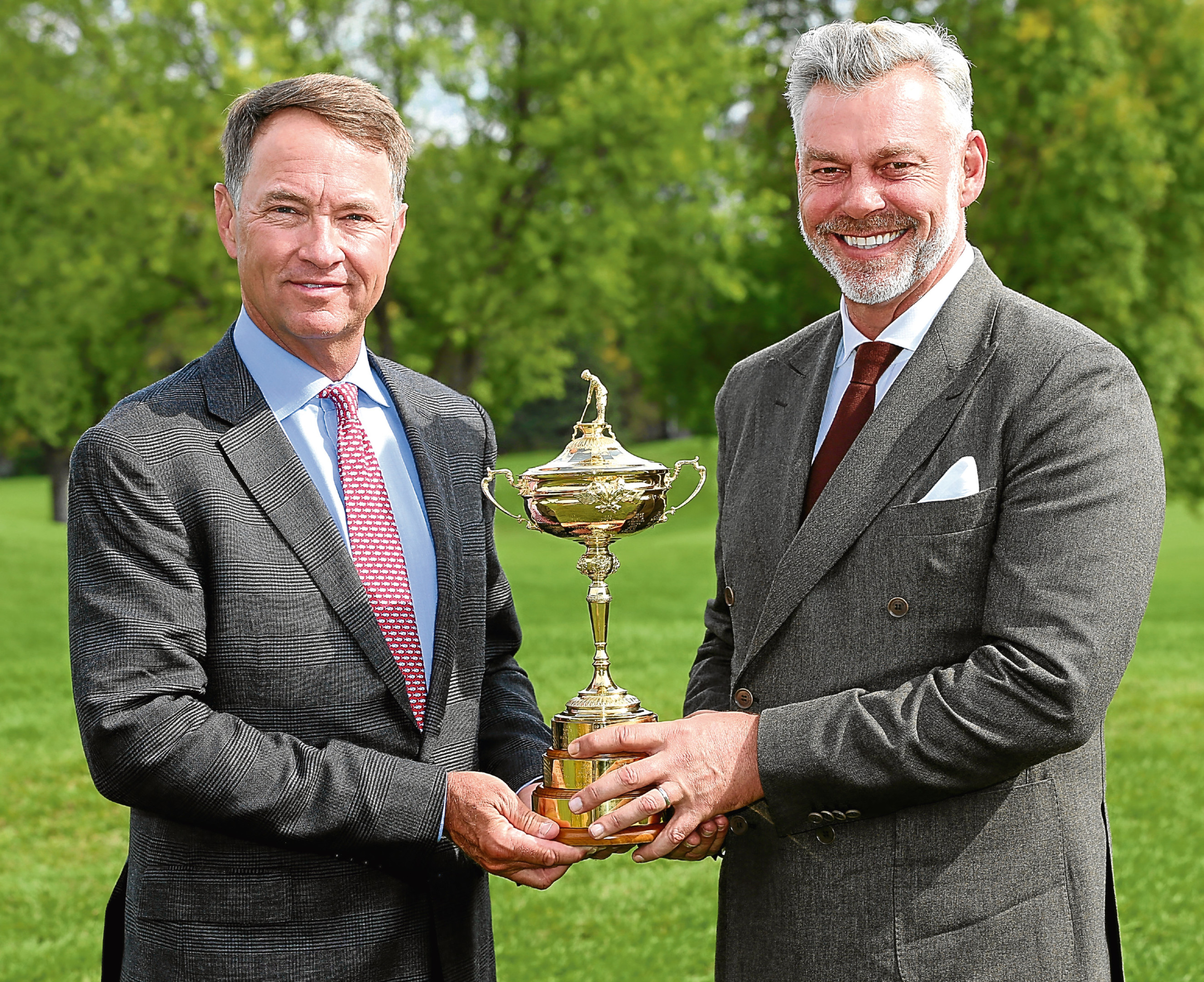Let’s cut to the chase; there’s one obvious, overriding reason why Europe has dominated the USA against all the odds in the Ryder Cup in recent times.
European “templates”, and leaving no stone unturned at least twice, do certainly help the cause.
So do a greater knowledge and appreciation of team golf, and the unquestionably the greater camaraderie of the European Tour (although overstated; there’s been plenty of dysfunctional behaviour within the Euro “family”).
But none of explain why a team representing world golf’s most productive talent factory habitually loses to its considerably less-resourced rival.
Only one thing explains it all; bottle.
What made us, while trembling with anticipation, know that Martin Kaymer would hole the putt at Medinah which amounted to the single most pressurised situation in recent golfing history?
What made us understand that even three down after five holes against Jordan Spieth at Gleneagles, Graeme McDowell would come back?
Why did we know in what was rumoured to be a pre-agreed match-up that Rory McIlroy would hand Rickie Fowler his backside two years ago?
Go further back. Why did Philip Price beat Phil Mickelson in 2002? Why did the likes of Philip Walton, Eamonn Darcy, Christy O’Connor Jnr, Steve Richardson, Paul Way become giants in this format when they were nearly nowhere at any other?
Why do Colin Montgomerie, Sergio Garcia and Lee Westwood, serial failures in major championships, have such great records in the Ryder Cup?
Bottle in the Ryder Cup is different to even the majors. There’s none of the crucial peer pressure element when you’re playing for yourself. Yes, you might want to please a loved one, a coach or mentor, but essentially the player is in it for his own glory.
The Ryder Cup you have 11 other guys plus a captain and backroom staff, a nation or continent PLUS all those loved ones and mentors. It’s a far greater examination of the psyche even than the back nine of a major.
The way that established players, even those who show considerable fortitude when playing for themselves, simply fold under this additional pressure is illuminating. And far more Americans have folded than Europeans.
Davis Love III, it’s generally accepted, captained very well at Medinah in 2012. Paul McGinley, an observer as a vice-captain to Jose Maria Olazabal, can’t fault his strategies for the first two days.
But the inability of just about any of his players to play the final two holes showed the bottle deficit. Nine of the 12 singles went to the last two, Europe won 6 and a half points out of those. One point the other way and the US wins.
Furthermore the three most crucial of those losses were Phil Mickelson and Jim Furyk losing one down to Justin Rose and Sergio Garcia both having been one-up on the 17th tee, and Steve Stricker losing to Kaymer in the clincher.
Two of Love’s wildcard picks and his on-course lieutnant. The US must win the majority of matches that reach 18 – the real bottle zone – if they are to regain the cup.
Greatest of all time?
I could almost hear my American friends wailing “No, no, shut up Davis!”
In an interview last week the US captain declared his team, even before it had actually been completed, “the best, maybe, ever assembled”.
Some US fans love this stuff, obviously, possibly those who believe equally ludicrous fantasies like Mexican walls or Barack Obama being born in Kenya. Some others, more attuned to recent failures in the Ryder Cup, cringe at such a statement being used as fuel posted on the team room wall by underdog Europeans, as has happened in the past.
It’s not even remotely accurate either, by any measurement you care to use. In world ranking terms, this week’s US team is no better than that at Gleneagles two years ago.
In major championship terms, their 11 titles don’t (and won’t ever) even begin to reach the 49 won by the famous 1981 US team at Walton Heath, or the 40 won by the 1975 US team at Laurel Valley. Take out Jack Nicklaus’ 18 from both of those and the 2016 team are still nowhere near.
The verdict? Close, but…
Although I’ve had fun with The Task Force! (it should always be used in this form from now on, as it’s always sounded like a bad collection of superheroes) I’ve never wavered from my belief that the USA should win at Hazeltine.
They had to be extremely creative to lose at Medinah, after all. I’ve always thought that Europeans were far too lazy heaping all the blame for Valhalla in 2008 on Nick Faldo; they would have lost that one with any captain.
The balance of the US team is better than Europe this time. Immense responsibility is on McIlroy, Stenson, Westwood and Rose. Although I do think there’s collectively more pressure on the US, it’s spread among more guys.
It’ll be close, because we rarely have Ryder Cups that aren’t. But I see the US winning by a couple of points.
